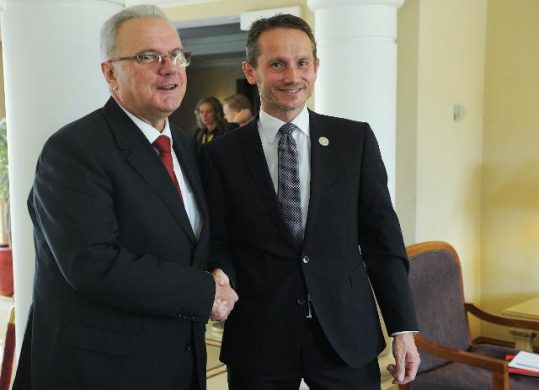Det fremgår af et blogindlæg af Kommissær for udvikling og internationalt samarbejde, kroaten Neven Mimica:
We’re now in the month of the European Year for Development dedicated to Demography and Migration
Before elaborating on migration, which clearly has become a top priority for the Union, allow me to give you some brief ideas why demography is a key issue, too, and needs to be considered carefully in our development policies.
Globally, fertility rates are declining and populations are ageing. Yet, population change varies widely across the world.
There are 66 countries with high fertility rates and 45 of these are in sub-Saharan Africa, where many women still do not have their family planning needs met.
The size and age of a country’s population have an impact on a country’s social and economic development in many ways, such as how many children need schooling or the size of the labour force.
The EU supports partner countries to provide their populations with the necessary conditions for a decent life for all, by, for instance, strengthening civil registration systems (such as ensuring citizens have a birth certificate) and vital statistics and providing family planning services to women.
EU hjælper lande ramt af flygtningekrisen
Turning to migration, there is no need to emphasize the importance. It cannot be overemphasized. The day-to-day developments remind us how critical and urgent a comprehensive response to this challenge is. Far too many have already died or suffered, far too often it is children who are the victims.
In his State of the Union speech on 9 September, President Juncker announced a new, comprehensive package that shows the EU’s determination to support countries most affected by the current refugee and migratory crisis.
It includes essential elements within the Union, such as relocation of refugees, or targeted support to most affected Member States. It also reflects that we will be able to find mid- to long-term solutions only if we successfully address the root causes in the countries of origin and transit.
As long as extreme poverty and conflict in other areas of the world continues, migrants and refugees will seek a way to Europe.
The Union’s development cooperation plays an important role in tackling issues like poverty, insecurity, inequality and unemployment which are among the drivers of forced displacement and irregular migration.
Fond skal behandle rødderne til flygtningekrisen
In order to provide fast and coordinated European support, the European Commission is proposing to create an Emergency Trust Fund for stability and addressing root causes of irregular migration and displaced persons in Africa. It will focus on the Sahel and Lake Chad regions, the Horn of Africa, and the North of Africa.
The Trust Fund, with an allocation from the Commission of €1.8 billion, will support all aspects of stability and contribute to addressing the root causes of destabilisation, forced displacement and irregular migration.
This will be done by promoting people’s resilience, economic and equal opportunities, security and supporting the countries’ development and migration management.
In addition to the Trust Fund, the Commission is determined to step up its assistance to countries of origin and transit, including support for improved migration management and to ensure that migration concerns are integrated into partner countries’ development strategies and sectorial policies.
Flygtninge og slumområder i storbyerne
One of the most visible impacts of migration amongst developing countries (known as South to South migration) and demography is the rapid increase of urban development and the creation of slums around the biggest towns.
Some of these areas pose real challenges to development – representing a threat to the environment and available resources (such as water) or increasing the need of basic services (waste management).
If these challenges are successfully addressed, cities may offer great development opportunities for their inhabitants.
This is because urban habitats offer a combination of social, environmental, cultural and economic possibilities that could release the untapped potential leading to the creation of sustainable urban societies.














